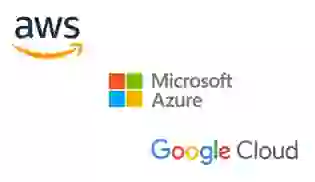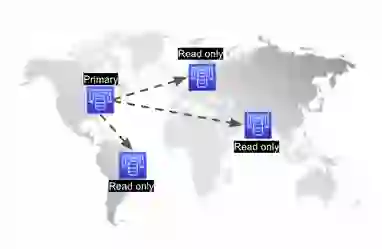
Learn more

ElastiCache is Amazon’s popular managed Redis service. It has seen wide adoption over the past decade as businesses have recognized the incredible potential of two emerging technologies: AWS (Amazon Web Service) for cloud computing and Redis as an in-memory data store. Both AWS and Redis have transformed the way we use technology, making faster, more scalable, and more resilient digital experiences the norm.
Organizations that concurrently moved to the cloud and sought to speed up their applications naturally turned to AWS’ ElastiCache service when they had outgrown open source Redis and were seeking a managed service. ElastiCache remains a solid choice for smaller startups building from the ground up on AWS and seeking the benefits of Redis without the expense or hassle of managing it.
But successful businesses grow, and the past decade has revealed that as businesses scale they eventually outgrow ElastiCache’s abilities. AWS ElastiCache is a managed service built on open source Redis and it lacks much of the enterprise-grade functionality required by businesses operating at scale.
So how do you know if you may be outgrowing ElastiCache? Here are a few key signs:
| Amazon ElastiCache | Redis Enterprise |
 |  |
Available as a fully managed cache in AWS only. | Available as a fully managed database and cache in AWS, Azure, and Google Cloud. Supports modern technology stacks with the ability to deploy a cache that brings real-time performance to on-prem, hybrid, and multicloud applications. |
| ElastiCache | Redis Enterprise |
| Active-Passive | Active-Active Geo Distribution |
| ElastiCache offers the ability to unidirectionally replicate data from a source cache cluster to destination clusters in other regions (in AWS only) with active-passive (replica-of) replication. | In addition to offering Active-Passive replication, Redis Enterprise customers can set up highly resilient and scalable distributed caches with bidirectional replication using Active-Active Geo Distribution. Active-Active enables Redis Enterprise customers to deploy a unified cache across regions, clouds, or on-prem infrastructure. |
 |  |
| The limitations of this approach are that it only scales read volume, while writes still need to be made to the primary cluster. This means write latency can build as writes travel to the source cluster. It also means write-heavy applications will struggle to scale. ElastiCache’s approach also doesn’t provide the added resilience of replicating data across multiple clouds and on-premises. ElastiCache’s approach to replication provides an SLA for 99.99% availability. | Active-Active offers local latency regardless of the number of geo-replicated regions (or their distance) while providing seamless conflict resolution that enables reads and writes to multiple cache nodes simultaneously. Redis Enterprises’ Active-Active Geo Distribution brings an industry-leading SLA for 99.999% availability, avoiding over 45 minutes of downtime per year over ElastiCache. |
| ElastiCache | Redis Enterprise |
| Data Tiering | Redis on Flash |
| ElastiCache recently introduced a service to provide tiered storage, keeping frequently accessed data in RAM while moving less-frequently accessed data to SSD. Data tiering is typically required for large and expensive datasets. These same datasets are critical to business and require data persistence, which ElastiCache’s data tiering cannot support. ElastiCache’s data tiering doesn’t support all use-cases, only supporting eviction policies for volatile-least recently used, all keys-least recently used, and no eviction max memory policies. | Redis Enterprise offers a mature tiering product that has stood up to the test of implementation in the most demanding production environments for over five years. Redis on Flash is the original Redis service for data tiering that maintains application performance while moving less-frequently accessed data to less expensive SSD. Redis on Flash provides the cost savings of data tiering while safeguarding customer data with built-in data persistence. It also provides faster replication times by splitting datasets into multiple small shards and running them in parallel, helping to reduce the risk of data loss. On the other hand, ElastiCache keeps data in a single large shard. Redis on Flash also enables additional use-cases, supporting more eviction policies. |
 ElastiCache is a purely single-tenant system. It follows a method where Redis is deployed as a container or a virtual appliance and allows the underlying management solution to spawn a new Redis instance. Multi-tenancy is achieved at the server/infrastructure layer. These solutions are priced per Redis instance. The effects of scale and scope economies benefit these service providers more than you. Learn more. |  Redis Enterprise Cloud offers multi-tenancy in which a single subscription to Redis Enterprise Cloud serves hundreds of tenants. Each tenant has its own Redis database endpoint, which is completely isolated from the other Redis databases. You can host multiple dedicated databases in a single plan, each running in a dedicated process and in a non-blocking manner. When you deploy Redis Enterprise in your data center, private cloud, or a virtual private cloud, you benefit from the scope economies of the multi-tenant architecture. Learn more. |
Redis is at the core of our business – it’s who we are and it’s what we do. So it’s no surprise that we are far ahead of other Redis services in providing innovative ways to keep costs low while maintaining performance and resilience. One such way is our quorum concept. Most NoSQL databases use three replicas to ensure high availability. The first is used to store data, the second as a failover, and the third as the tiebreaker to determine which is correct should the primary and replica have inconsistent data. But DRAM is expensive, and maintaining three replicas of a dataset is incredibly expensive. Redis Enterprise is able to provide a highly available system with only two replicas, where your tiebreaker is determined at the node level by using an uneven number of cache nodes in a cluster, saving you nearly 33% out of the box. Learn more.
Check out our Redis Enterprise vs. ElastiCache Datasheet with a full feature-by-feature technical comparison and see if it’s time to upgrade to Redis Enterprise.